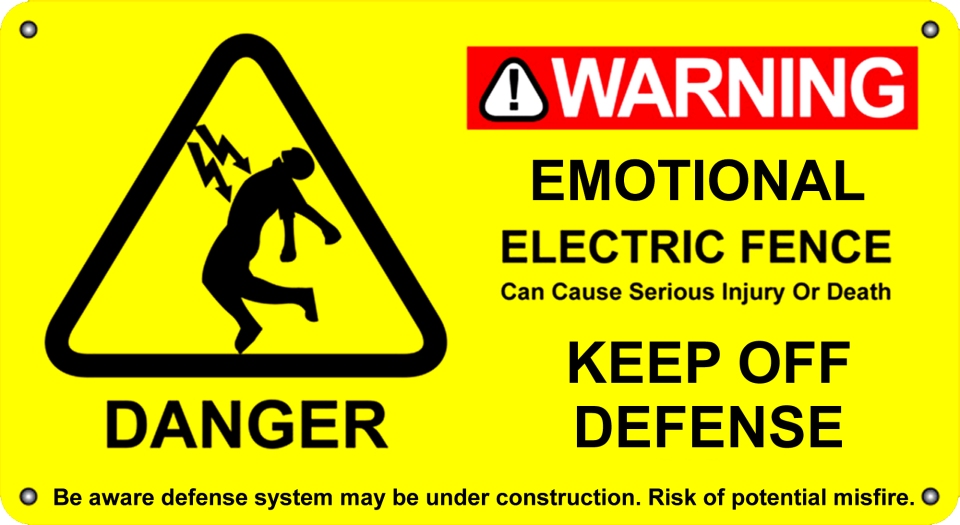Whether you’re suffering from Post Traumatic Stress Disorder (PTSD), struggling with emotional pain from a recent/past relationship, or carrying some other type of heavy burden from another time in your past, this Emotional Release Method (ERM) can help alleviate or eliminate the pain from past trauma or drama in just a few minutes.
I’m all about delivering the best and quickest results for my clients and I use my Emotional Release Method for clients, others I love and care about, and myself, when I need to address negative emotional anchors related to trauma or drama.
The method is a meditative tap dance which releases the emotive connection to any event from your past that is causing you emotional pain and/or physiological discomfort. The pain associated with past trauma and drama can be debilitating and my Emotional Release Method can give you the relief you need to get back on your game.
While my ERM is effective for disconnecting the emotional ties to deep-rooted negative feelings, and sorrow associated with distressful heartbreak, stress, drama, or trauma, it does not treat any underlying issues which may need to be dealt with and may be a part of your personal deep work, but you will experience the emotional pain relief now.
Emotional Release Method
To learn my Emotional Release Method, I suggest that you get to a quiet, secluded space, where you can have a bit of privacy to practice my ERM. Get a place where you can sit comfortably without interruption for a few minutes. Once you know how to perform the Emotional Release Method you can do it anywhere, anytime you need emotional relief.
Before you start, reduce the definition of the source of your emotional pain to a single sentence and be as brutally honest and open with yourself about how you feel. For instance, “I hate it when my boss yells at me when I didn’t do anything wrong!” If your emotional discomfort were on a scale of 1 to 10, make sure that when you repeat your defining sentence that it evokes the highest level of emotional discomfort.
In this example, we will assume your sentence (I hate it when my boss yells at me when I didn’t do anything wrong!) rates a 10 on your emotional scale of upset. Now, we can begin applying the Emotional Release Method.
Sit quietly and calmly, place your hand’s open palm in the center of your chest. Take a deep cleansing breath and relax as much as you can. Pause. Take another deep cleansing breath and relax a little more. One more deep cleansing breath will get you to a place where you can initiate the Emotional Release Method.
Using the tips of three fingers, move them in a circle in the middle of your chest gently, round and round, visualizing your regular breaths are going in and out of your heart, as you tell yourself these words, repeat them after me:
“I love you.”
“I would never knowingly do anything to hurt you.”
“I am here for you.”
“I will never leave or forsake you.”
“I love you.”
Continue to visualize and feel your normal breathing as if it were going in and out of your heart.
You are going to gently and repeatedly tap four points on your face, in a sort of sign-of-the-cross fashion, starting with the forehead, followed by the chin, the bone on the outside side of your left eye, then the right.
Tapping on the center of your forehead, repeat your defining sentence, feeling as much negative emotion as you can when you speak the words. Breathe in. Breathe out.
Next, tapping on your chin, repeat the same words, feeling as much negative emotion as you can, associated with your word sequence. Breathe in. Breathe out.
Now tapping on the left side of your left eye on the bone, repeat the sentence that represents your emotional upset. Breathe in. Breathe out.
Finally, the outside of the right eye, on the bone, tap as you repeat those words again. Breathe in. Breathe out.
Back to drawing a continuous circle around the area of your heart, breathe into your heart love and compassion, and breathe out anything that might be not good for you. Breathe in. Breathe out.
Hold your open-palmed hand over your heart and repeat these words:
“I love you.”
“I would never knowingly do anything to hurt you.”
“I am here for you.”
“I will never leave or forsake you.”
“I love you.”
Breathe in. Breathe out.
Now repeat those words, the words that previously rated a 10 on your negative emotional scale. What number does it feel like now?
If it is not down to a 2 or 3, or gone altogether, then repeat the Emotional Release Method again. You will find the negative emotions released more and more every time you perform my ERM.
Now that you know how to apply the Emotional Release Method, you can do it anytime, anywhere when you need an emotional space and a sense of peace about anything that tries to slow your roll.
You are now taking control of your own emotional wellbeing.
Congratulations.
You are loved.
You are love.





